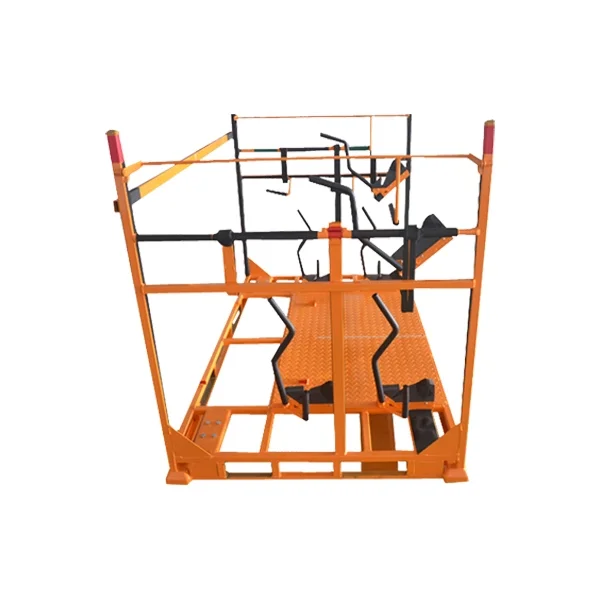Industrial 3D printing has become a transformative technology across automotive, electronics, medical devices, and manufacturing sectors. Central to its success is filament quality, particularly PETG (glycol-modified PET), which offers a balance of strength, flexibility, and printability.
Ubest, since 2020, has specialized in advanced polyester materials, including PETG resin, low-melting PET, and additives. With its UB-102 PETG series, Ubest ensures filaments perform consistently under industrial printing conditions. This article explores every aspect of how Ubest maintains quality, from molecular-level resin design to final packaging, providing B2B buyers with actionable insights.
1. Material Fundamentals: PETG Resin at the Core
PETG’s properties make it ideal for industrial applications:
-
Chemical Structure: Glycol modification reduces brittleness, increases clarity, and enhances layer adhesion.
-
Mechanical Properties: Excellent tensile strength, impact resistance, and flexibility allow functional part production.
-
Thermal Behavior: Moderate extrusion temperatures (~230–250°C) prevent warping while maintaining strength.
-
Surface Finish Options: Transparent, opaque, glossy, or matte variants meet aesthetic or functional requirements.
Ubest Advantage: UB-102 resin is engineered for high molecular uniformity, ensuring every filament spool behaves identically during printing.
2. Production Process: From Resin to Filament
2.1 Resin Preparation
-
Purity Control: Only high-grade PETG polymers are selected; additives ensure consistent flow and moisture resistance.
-
Batch Uniformity: Each batch is tested for viscosity, melt index, and moisture content.
2.2 Filament Extrusion
-
Precision Machines: Multi-stage extruders maintain tight diameter tolerances (±0.05mm).
-
Thermal Optimization: Controlled temperatures prevent stringing and bubbling.
-
Real-Time Monitoring: Continuous diameter, roundness, and surface smoothness checks.
2.3 Cooling & Spooling
-
Filaments are cooled evenly to avoid internal stress.
-
Spooling ensures tension consistency to prevent filament breakage.
2.4 Variant Production
-
High-speed printing PETG: optimized flow for mass-production efficiency.
-
Matte effect PETG: modified surface for design-oriented applications.
-
Special packaging PETG: moisture-proof for shipping and storage.
3. Quality Assurance: Ensuring Industrial Reliability
Ubest implements multi-tier QA:
| QA Step | Method | Purpose |
|---|---|---|
| Diameter & Roundness | Laser calipers | Consistent extrusion, smooth feeding |
| Tensile & Impact Testing | Mechanical testing machine | Confirm strength and flexibility |
| Thermal Stability | DSC / TGA analysis | Maintain extrusion performance |
| Print Simulation | Sample 3D printing | Check stringing, layer adhesion, surface finish |
| Moisture Content | Karl Fischer / moisture meter | Prevent printing defects due to water |
This reduces variability, ensuring reliable print performance for industrial clients.
4. Packaging and Transport: Preserving Filament Integrity
-
Moisture-Proof Packaging: Vacuum-sealed rolls with desiccants prevent water absorption.
-
Reduced Drying Needs: Industrial users save time and energy.
-
Transport Resilience: Packaging withstands long-distance shipping without filament degradation.
5. Industrial Applications: Real-World Utility
PETG filaments serve diverse sectors:
| Sector | Application | Ubest PETG Advantage |
|---|---|---|
| Automotive | Brackets, prototypes | High tensile strength, smooth finish |
| Electronics | Enclosures, mounts | Low warping, dimensional stability |
| Medical & Lab | Non-critical fixtures | Chemical resistance, high clarity |
| Industrial Machinery | Custom jigs, fixtures | High toughness, flexibility |
6. Performance Optimization and Customization
-
High-Speed Printing PETG: Adjusted melt viscosity for fast extrusions.
-
Matte Effect PETG: Surface-modified for design or branding aesthetics.
-
OEM/ODM Flexibility: Ubest supports private labeling, color matching, and specific diameter requirements.
This allows clients to align filament properties with production requirements, reducing trial-and-error in manufacturing.
7. Environmental and Cost Considerations
-
Sustainable Polyester Sourcing: Reduces environmental footprint.
-
Energy-Efficient Production: Controlled extrusion and drying minimize energy use.
-
Economic Benefits: High consistency reduces failed prints and material waste, lowering overall production costs.
8. Market Insights: Why Quality Matters in 3D Printing Filaments
Industrial buyers demand:
-
Repeatable Results: Each spool must perform identically to avoid downtime.
-
Reduced Post-Processing: High-quality PETG reduces sanding, annealing, or finishing needs.
-
Global Standards Compliance: Filaments must comply with international specifications for industrial use.
Ubest addresses these market needs by investing in R&D and adhering to stringent QA protocols.
9. Best Practices for Industrial Buyers
-
Check QA Documentation: Verify batch consistency, moisture content, and tensile properties.
-
Choose Specialized Suppliers: Partner with companies like Ubest with proven industrial-grade PETG production.
-
Store Filaments Properly: Maintain in vacuum packaging or dry cabinets.
-
Select Correct Variants: Match standard, high-speed, or matte filaments to production goals.
-
Request Technical Support: Suppliers should provide printing guidance, troubleshooting, and OEM customization.
10. FAQ – PETG Filaments for Industrial 3D Printing
Q1: Can PETG filaments replace ABS in functional parts?
A: Yes. PETG is easier to print, more flexible, and nearly as strong as ABS, with less warping.
Q2: How does Ubest prevent moisture-induced printing defects?
A: Through special moisture-proof packaging and additive-enhanced resin formulations.
Q3: Are matte and high-speed variants suitable for production?
A: Absolutely. Each variant is engineered to maintain mechanical integrity while meeting specific printing requirements.
Q4: How precise is the filament diameter?
A: ±0.05mm tolerance ensures smooth feeding and reliable extrusion.
Q5: Can Ubest provide OEM or private-label filaments?
A: Yes. Ubest supports full customization including color, diameter, packaging, and branding.
11. Conclusion
Ensuring consistent quality in PETG filaments is critical for industrial 3D printing success. Ubest achieves this through:
-
High-grade resin selection and additive optimization
-
Precision extrusion and thermal control
-
Comprehensive quality assurance
-
Specialized packaging for moisture control
-
Customizable product variants
-
Support for industrial applications worldwide
By analyzing every step from resin to finished filament, industrial clients can rely on Ubest for high-performance, consistent, and economically efficient PETG filaments.
www.wxubest.com
Wuxi Ubest New Material Technology Co., Ltd.






+ There are no comments
Add yours